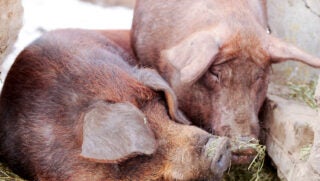Farmer John Stahl used his leg as a fulcrum to swivel a 300-pound barrel of grain from his flatbed truck to a tractor bucket. “There’s a technique to moving these heavy barrels,” said Stahl, who’s handled more than 10 barrels of grain each day for nearly three years. “You have to use your body as leverage or you’re going to have a bad back.”
It’s March in western Montana, and the snow is melting. For Stahl — or “Farmer John,” as he’s known around here — it’s business as usual; get the sheep, goats, cattle, and chickens fed before supper.
About three years ago, Stahl began partnering with Draught Works brewery in Missoula, Montana, to pick up free spent grain — a byproduct of the brewing process — to supplement his livestock feed. Stahl, who’s just shy of 70 years old, said using the spent grain for livestock feed is a solid sustainable practice and that it has cut his feed bill by 30 percent.
But it’s also hard work — a big commitment, and he’s learned some hard lessons along the way.
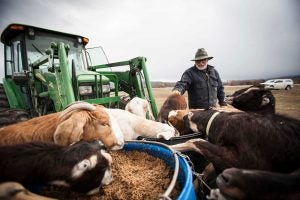
Brewer’s spent grain and nutrition
Farmers turning a brewer’s spent grain into filling and nutritional livestock feed is a relatively common practice. Some say the practice is as old as beer itself. It’s also a mutually beneficial practice. By the time a brew master extracts the fermentable sugar from the grain used to make beer, what’s left is a soggy mass of ground kernels. And lots of it. A small microbrewery can easily use 300 to 500 pounds of barley for a 200-pound batch of beer.
But those left over soggy kernels still have value — if not for people, then for sheep, cattle, pigs, and chickens.
According to the Institute of Brewing and Distilling, a brewer’s spent grain is the most abundant byproduct generated in the beer-brewing process and could account for more than 80 percent of a brewery’s total byproduct. After the mash extracts most of the sugars, proteins, and nutrients, the barley is still rich in digestible fiber and good bypass protein, which is why agricultural uses of spent grain predominate.
Draught Works has worked with local farmers to get rid of grain since it opened in 2011, according to Kyle Sillars, the head brewer.
“Without local farmers picking up grain, it’s a logistical nightmare,” Sillars said.
With Stahl’s partnership, Sillars reduces his waste of natural resources, and Stahl has an ample supply of nutritional feed for his livestock.

Navigating the new feed process and lessons learned
John Stahl’s 240-acre farm in Missoula has been in his family for a century. Over time, the animal population has grown to include dairy and meat goats, Dexter cattle, chickens, sheep, and more. Today, about 350 animals call Farmer John’s Sustainable Farming home.
When Draught Works contacted Stahl through Facebook a few years ago offering him free spent grain, Stahl accepted. But integrating the grain into his feeding routine was a bit of a learning curve.
“What’s really important is the feed value,” said Stahl.
When Stahl first brought the grain home, he scooped some wet grain into a bucket and weighed it. He let it dry and weighed it again.
“I lost 80 percent of the weight,” said Stahl. “So that was my baseline.” Each 300-pound barrel of spent grain was equivalent to about 60 pounds of feed. Knowing the feed value is important for regulating feed amounts for each animal species.
“The basic rule of thumb is, if you’re going to feed your sheep and goats two pounds of feed, you need to make sure the equivalency of grain is two pounds,” said Stahl.
It’s also important to feed the grain in the late afternoon, not in the morning.
“I found that if I fed the sheep in the morning, they gorged themselves on it and didn’t eat anything else for the rest of the day,” said Stahl. “And the lack of grazing caused a vitamin B deficiency.”
As a result, his sheep were getting sick early on. Some were even getting an odd curled hoof growth. But feeding in the afternoon avoided these problems as it allowed the sheep to digest the grain all night and be ready to graze in the morning.
Stahl also learned the importance of regulating the quantity of grain to each animal species by spreading the grain evenly in the field.
“I lost a $400 buck because he was hogging it” said Stahl. “The goat just ate too much and died. I had to learn the hard way.”
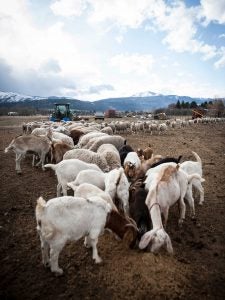
Navigating the grain-feeding system
The hum of Stahl’s tractor engine echoed as he transported three barrels of grain across a large field. He instantly received attention. A dozen goats rushed to meet him — climbing eagerly on the barrels to snack on the hearty grain inside. The grain smelled like fresh oats and was still warm to the touch.
“They just love it,” said Stahl. “They get so excited when they see me coming.”
“I also created this cage system,” said Stahl as he picked up a large oval-shaped metal cage with a chain on top. “It fits over the barrel, the chain on top attaches to the tractor bucket, and I can easily drag each barrel out in the field evenly to distribute the feed.”
Stahl said it took him a few months to figure out the logistics of hauling the grain and distributing the grain effectively in the field. But once he nailed down his system, it became routine.
On a typical weekday, Stahl arrives at Draught Works around 11:30 a.m., just a short 4-mile drive from his farm. With 10 to 12 empty 55-gallon barrels on the back of his flat-bed trailer, it’s easy for the brewery manager to fill each one with the day’s spent grain. Stahl then heads back to the farm with the full barrels and waits.
Around 4 p.m., he transfers a few of the 300-pound barrels at a time from the back of his flat-bed truck onto a tractor bucket and drives to each field to feed using his makeshift metal cage to drag the barrels and create a long row of grain. Roughly 300 sheep, 30 goats, 20 cows, a dozen chickens, and a yak named Patience eat the grain daily.
After feeding the livestock, Stahl isn’t done for the day. He still needs to clean the barrels.
Stahl lifted an empty barrel into a black water trough and spun it a few times to remove the exterior dirt and debris. He then scrubbed the inside and outside of the barrel with a large rough-bristled scrubber brush.
“It’s very hard work,” said Stahl. “You have to wash each barrel by hand after you feed and repeat this every day.”
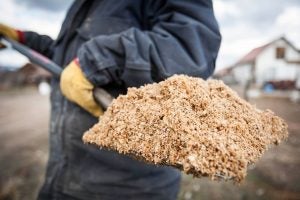
Pros and cons of using spent grain
Stahl advised that farmers should weigh the pros and cons of using spent grain to supplement their feed — like figuring out if the extra work and commitment is worth the cost savings.
“It’s turned out to be a blessing and a curse,” said Stahl.
Although it reduces his feed cost by about 30 percent, the tradeoff is that it takes about two hours every weekday to pick up the grain, feed the livestock, and wash the barrels. And, there is a huge commitment to the brewery in exchange for the free grain.
“You have to pick up the grain when its ready. That’s your commitment,” said Stahl.
“And when you’re handling 10 to 12 barrels of grain every day at 300 pounds each, you figure out quickly that it’s not for everyone,” said Stahl.
Today at Farmer John’s Sustainable Farming, the animals are healthy and friendly. Using spent grain from Draught Works to supplement livestock feed is just one way Farmer John is improving the quality of his animals for meat, wool, show, and fun.
PHOTO GALLERY
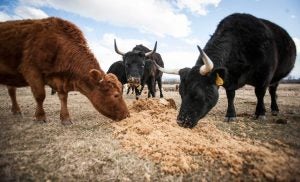
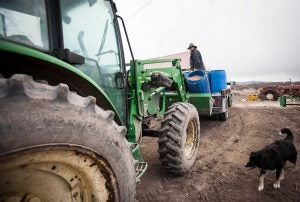

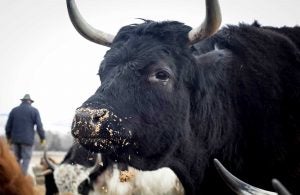
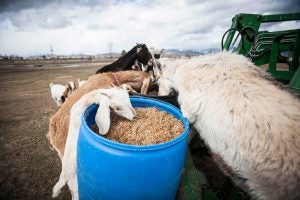
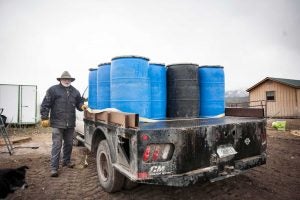
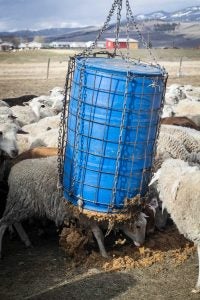
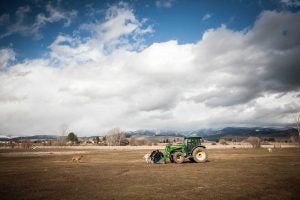
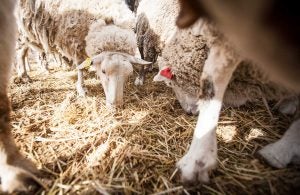
FINAL THOUGHTS
Farmer John’s advice for someone considering using spent grain from a brewery
There are three considerations for farmers:
“One is it’s really hard to get in because a lot of people like it. It’s good feed. So, you need to be aware of new breweries. There’s always new breweries going in. You need to be knocking on their door before they open.”
“The second is to be aware that it’s not free. They give you the stuff, but it’s not free. There is a cost. And, you have to make sure that you keep those costs down. Like wear and tear on your vehicle. That’s a big one. I just had $1,500 worth of brakes and struts done on my truck partly due to the weight of the barrels.”
“The third thing is to be aware that every different species of animal has different tolerances for the grain. You have to be aware of that. It’s not a feed-it-all-and-don’t-worry-about-it thing. You have to have a balanced diet.”
Suzanne Downing is an outdoor writer and photographer in Montana with an environmental science journalism background. Her work has been published in Outdoors Unlimited, Bugle Magazine, Missoulian, ActionHub, National Wildlife Federation, MTPR, Byline Magazine, Communique, UM Native News, and more.


